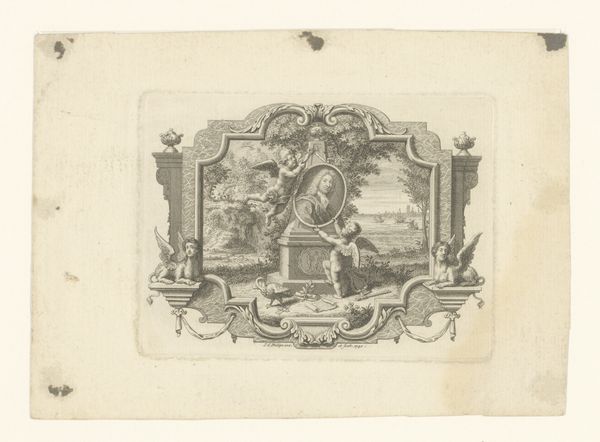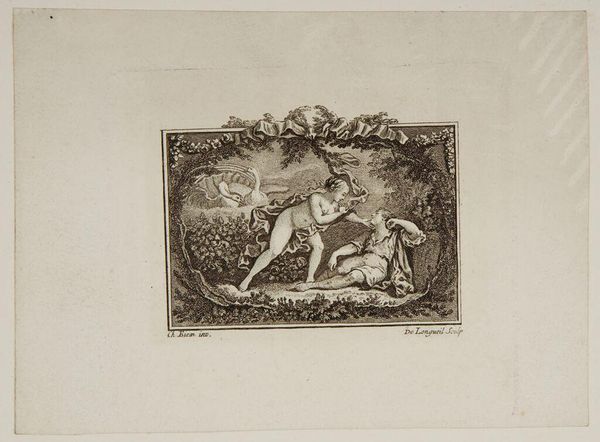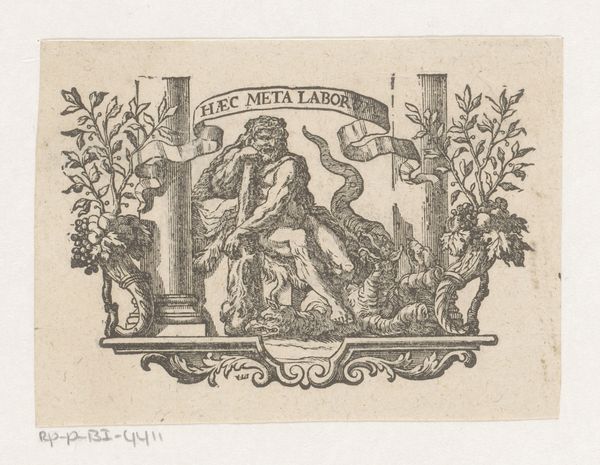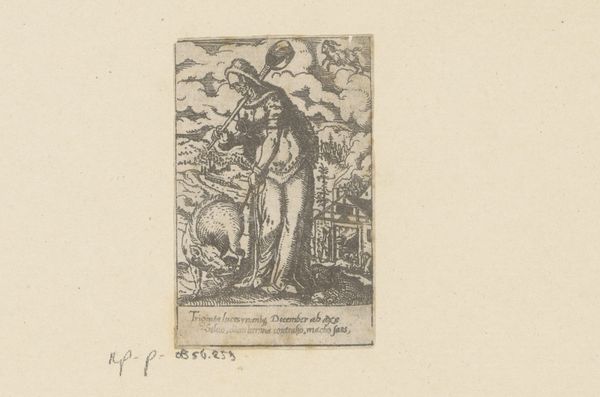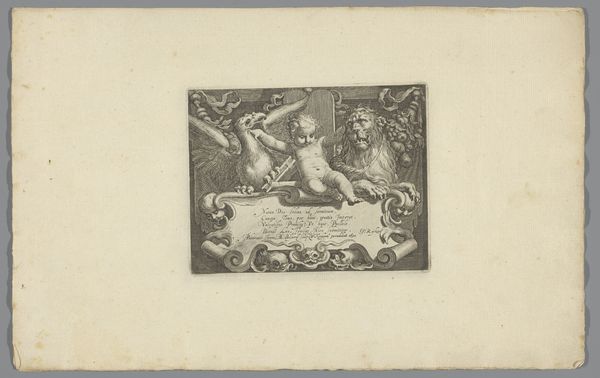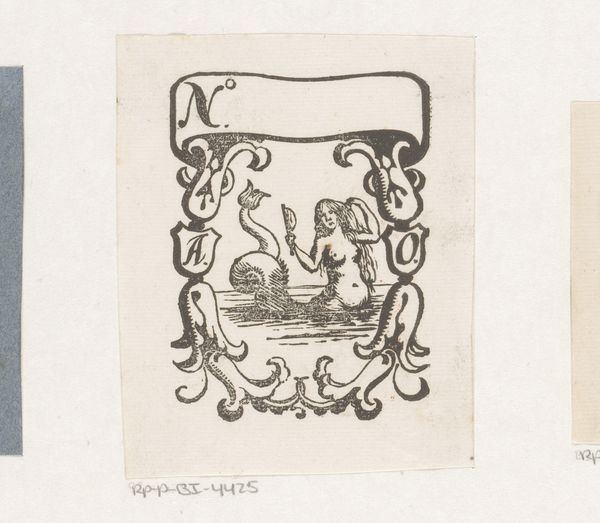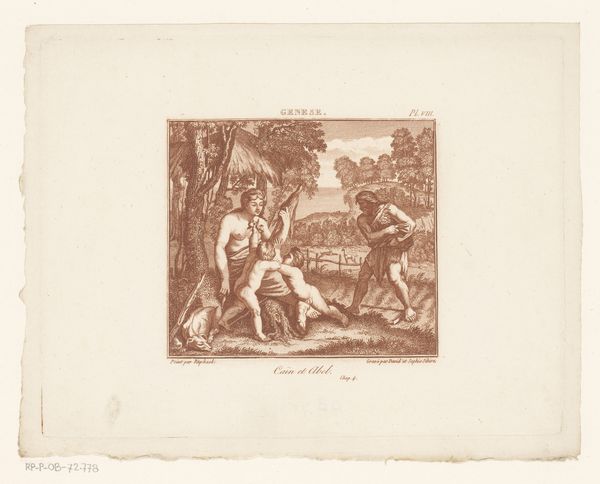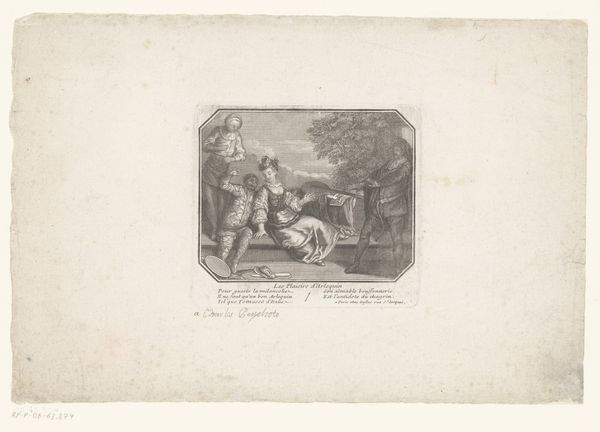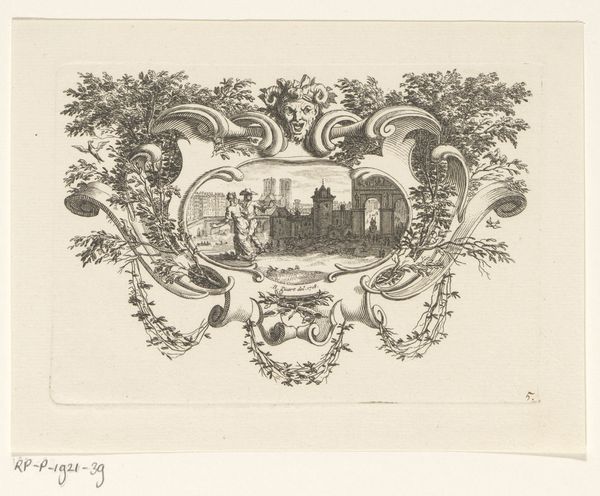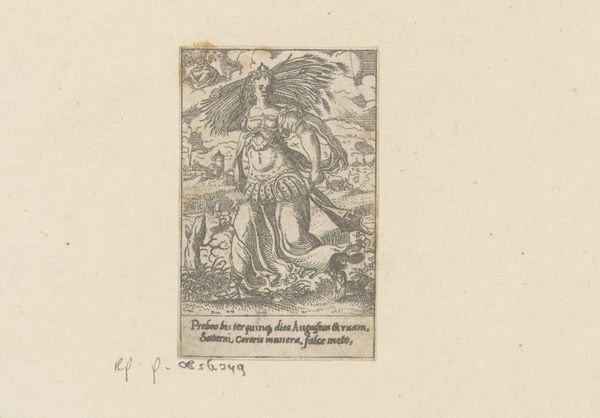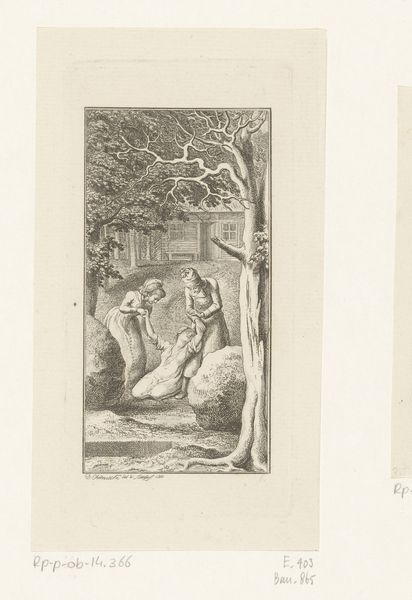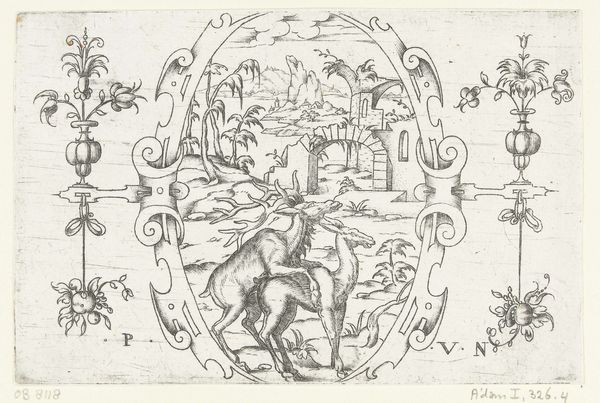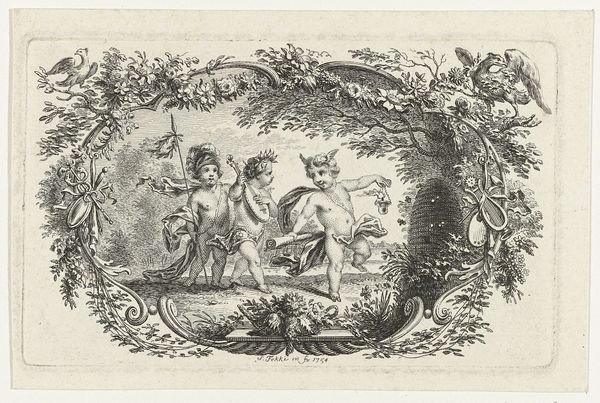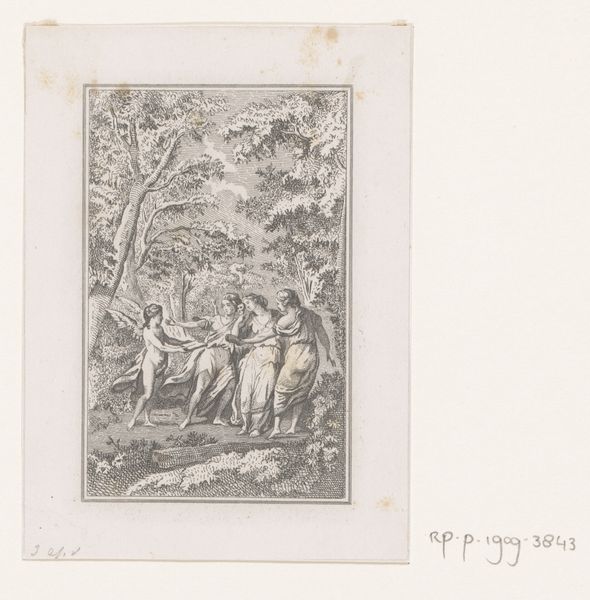
print, engraving
#
baroque
# print
#
old engraving style
#
landscape
#
figuration
#
line
#
history-painting
#
engraving
Dimensions: height 77 mm, width 108 mm
Copyright: Rijks Museum: Open Domain
Curator: Let’s turn our attention to this 17th-century engraving, "Schrijver met een boek zittend tegen een boom bij het water," or "Writer with a book sitting against a tree by the water." It exemplifies the period's fascination with both landscape and learning. Editor: It strikes me as a very self-contained scene. The figure seems lost in thought, shielded from the world not only by the tree, but by this whole framing device created with foliage. It gives the impression of an idealized retreat. Curator: Absolutely. The setting reflects a growing value of individualism within intellectual life, and this iconography became fashionable in artistic circles and portraiture across Europe during that era. Writers began to portray themselves differently, seeking visual symbols that underscored learning. Editor: Look how meticulously the engraver depicted the tree and the distant landscape, all to accentuate the man's reflective mood. The open book, positioned centrally, could be viewed as the core symbol. What is it meant to represent, exactly? Is it wisdom, divine inspiration, the weight of accumulated knowledge? Curator: In terms of context, books as symbols during the 17th century became statements unto themselves. The production and availability of books were increasing; their presence spoke to economic and social factors tied to new societal advancements. So here, a book represents both personal enrichment and public role for thinkers. Editor: The lines in the engraving suggest something, too—almost an emotional intensity through precision and control, the very essence of Baroque restraint. Notice the lettering "Scribentis Seccessus et Otra". A reminder that from seclusion emerges significance? Curator: Exactly. The Latin inscription confirms that ethos of productive solitude; in some interpretations it highlights that the greatest works stem from an individual's capacity to find clarity within themselves. That inscription serves almost as a proclamation. Editor: Seeing how all these components – the writer, book, natural world, framed intimacy, and proclamation – blend, helps better decode a vision of intellectual engagement for a specific time. Curator: Precisely, viewing art as more than aesthetic – instead, as a vessel filled with social ambition and political possibility. Editor: The cultural symbolism layered here gives depth to what at first appeared to be just a tranquil scene of contemplation.
Comments
No comments
Be the first to comment and join the conversation on the ultimate creative platform.
